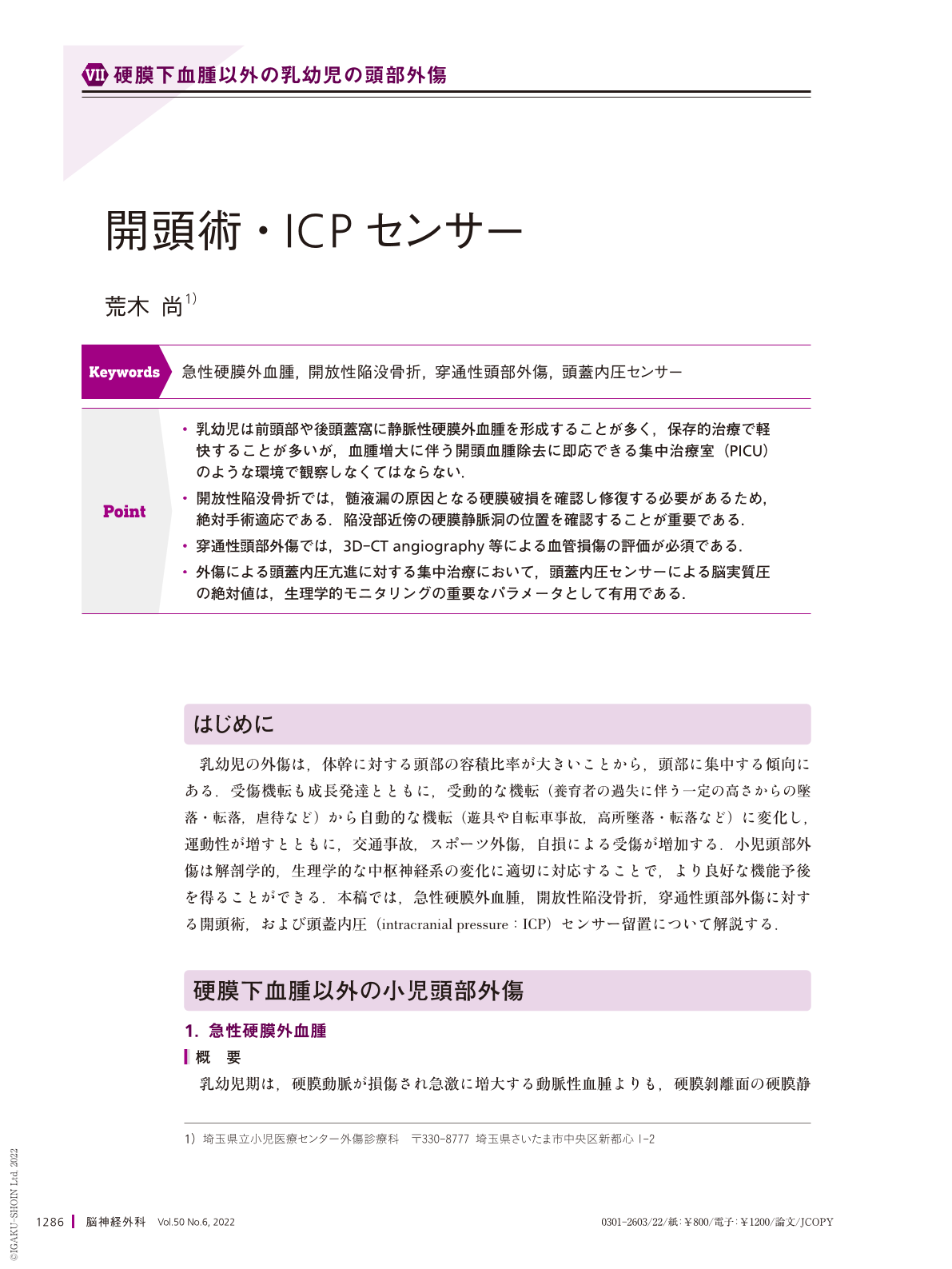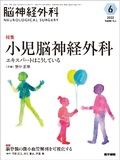Japanese
English
- 有料閲覧
- Abstract 文献概要
- 1ページ目 Look Inside
- 参考文献 Reference
Point
・乳幼児は前頭部や後頭蓋窩に静脈性硬膜外血腫を形成することが多く,保存的治療で軽快することが多いが,血腫増大に伴う開頭血腫除去に即応できる集中治療室(PICU)のような環境で観察しなくてはならない.
・開放性陥没骨折では,髄液漏の原因となる硬膜破損を確認し修復する必要があるため,絶対手術適応である.陥没部近傍の硬膜静脈洞の位置を確認することが重要である.
・穿通性頭部外傷では,3D-CT angiography等による血管損傷の評価が必須である.
・外傷による頭蓋内圧亢進に対する集中治療において,頭蓋内圧センサーによる脳実質圧の絶対値は,生理学的モニタリングの重要なパラメータとして有用である.
Traumatic injuries in infants tend to be concentrated in the head due to the large volume ratio of the head to the trunk, and the injury mechanisms change from passive(e.g., crashes and falls from a certain height due to caregiver negligence, or child abuse)to automatic(e.g., playground equipment and bicycle accidents, crashes and falls from heights)as the child grows and develops. Subsequently, as mobility increases, injuries from traffic accidents, sports-related trauma, and self-inflicted injuries increase. In addition, there are many cases that require urgent surgical treatment for forms of injury unique to the pediatric age, such as epidural hematoma, depressed fractures and penetrating traumatic brain injury. Since pediatric head injury is a broad category encompassing all of these changes, it is necessary to appropriately address the anatomical and physiological changes in the central nervous system, and detailed treatment that takes into account the individual background can lead to a better functional prognosis. This article describes craniotomies for head injury seen in pediatric age other than acute subdural hematoma(acute epidural hematoma, open depressed fracture, and penetrating traumatic brain injury)and also describes the technique of intracranial pressure sensor insertion, which is key to intensive care for intracranial hypertension.

Copyright © 2022, Igaku-Shoin Ltd. All rights reserved.


